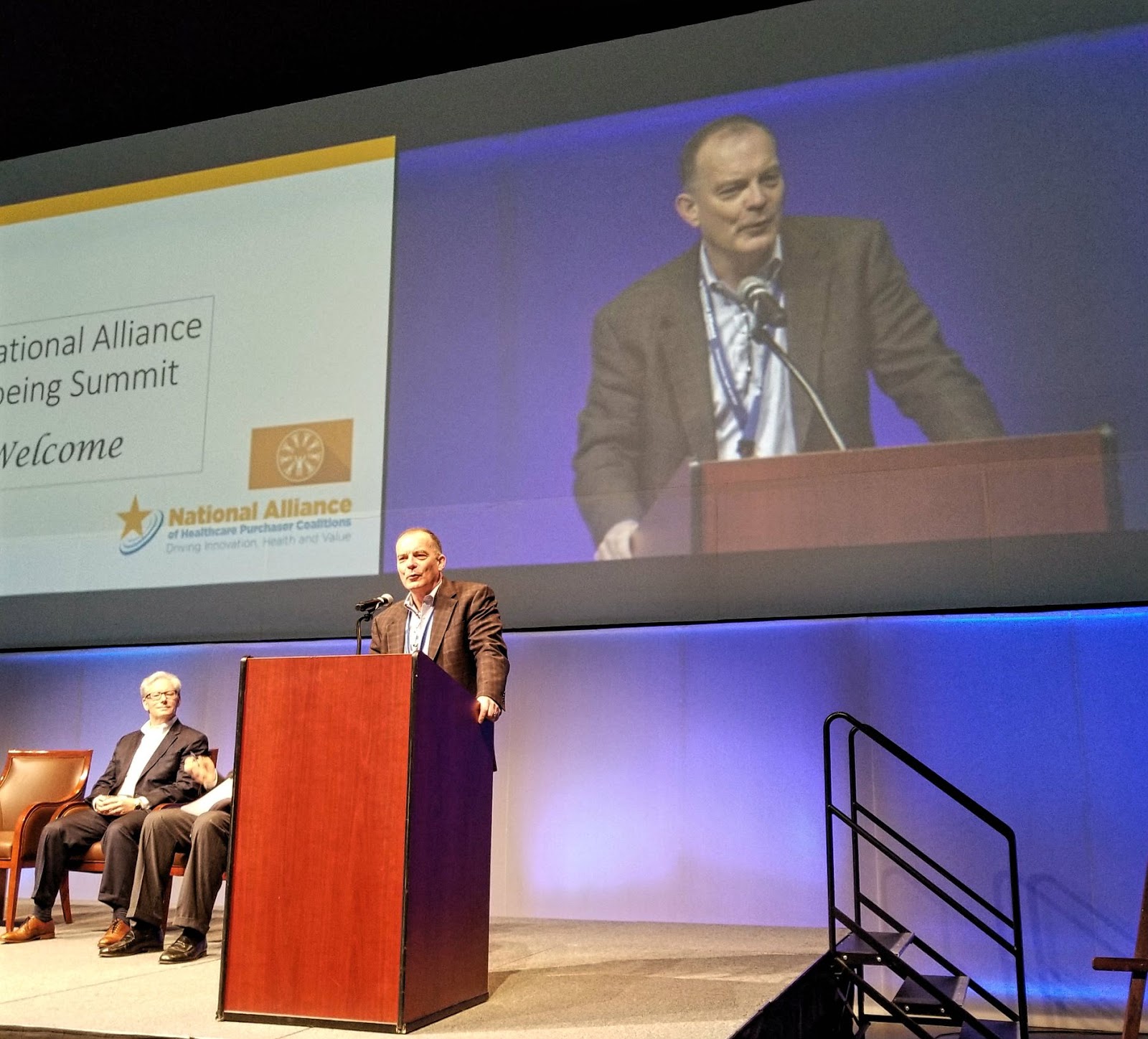At the National Alliance, collaboration is in our DNA. We promote cooperation not only among our members, but also between the many stakeholders in the health and healthcare space. But while it’s fruitful when we come to the table, identify common ground, and agree to work together, collaboration alone isn’t enough. We need collaboration toward an end: we need to act. And sparking action was the goal of our two-day summit on Mental Health and Wellbeing in Denver last week.
As our President and CEO Mike Thompson shared in his opening remarks, within the field of mental health there are challenges on all levels: lack of understanding and stigmatization, inefficient and ineffective treatment, and access issues, to name just a few. But for every area of concern in mental health, there are stakeholders who have found solutions, and we heard from them on Day One of our summit. Major corporations like EY and PwC shared how they are going beyond simply offering “programs,” and instead developing authentic cultures of care. Throughout the day, panelists shared concrete strategies as well as suggestions for their implementation. With many emphasizing the importance of evidence-based and measurement-based care, taking action toward visible and quantifiable outcomes was a theme throughout the day.
The use of technology was an overarching bright spot throughout both days of the summit. From physicians expanding access to mental health services through telemedicine, to the emerging research around pharmacogenomics aimed at improving quality of care through personalization, to apps that empower individuals to reach their health and wellness goals, technology is offering solutions to many of our most difficult problems. We can learn from these innovators, and apply what they are “doing right” in our own spheres.
Just as there was a consensus on the challenges around mental health, we heard broadbased support for a more inclusive, holistic vision of health in general on Day Two of the summits. Speakers offered both visions and strategies for reframing health to mean something closer to overall well-being, something more people-focused. While the well-being field is a relatively new frontier, there are many examples of models that are working. And it’s not only giants like Google who are giving us a roadmap (although what the company’s Superintendent of Well Being and keynote speaker, Bill Duane, is doing there is extraordinary). We can learn just as much from the successes of local organizations like the Avedis Foundation, which is transforming communities through things like community markets, walking trails, and neighbor support programs.
In explaining our collective motivation and the urgency of these challenges, Mike Thompson said, “Why now? Because we are living in a time when risks and costs are great.” Given the very engaged audience and the extended reach of our speakers’ messages on social media, we believe we’ve reached a critical moment of power and momentum. By merging collaboration with action, and looking to bright spots in our field, we will create real solutions to even our most complex challenges.

